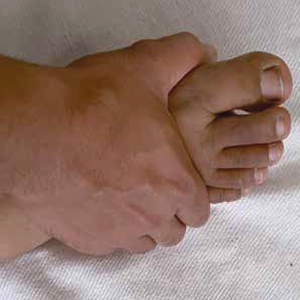Implication and utility of DAS-28 squeeze in rheumatoid arthritis: an Indian experience

Accepted: 10 August 2022
All claims expressed in this article are solely those of the authors and do not necessarily represent those of their affiliated organizations, or those of the publisher, the editors and the reviewers. Any product that may be evaluated in this article or claim that may be made by its manufacturer is not guaranteed or endorsed by the publisher.
Authors
The purpose of this study was to compare and correlate disease activity score including 28 joints counts (DAS-28) Squeeze with DAS-28 and clinical disease activity index (CDAI) to assess disease activity (DA) in rheumatoid arthritis (RA) patients. A total of 100 RA patients were included in the study. All subjects were evaluated for disease activity using the DAS-28 Squeeze, DAS-28, and CDAI. Spearman’s rho (ρ) was calculated to determine the correlation between DAS-28 Squeeze, DAS-28, and CDAI. Cross-tabulation was performed to compare and calculate the kappa coefficient for the link between two indices. For each scale, Cronbach’s alpha was also calculated to test dependability. The average age of the study group was 43.9±11.3. The mean scores on the DAS-28 Squeeze, DAS-28, and CDAI were, respectively, 3.58±1.06, 5.06±1.56, and 22.81±14.92. p=0.001 indicated a significant correlation between DAS-28 Squeeze and DAS-28 (ρ=0.986) and CDAI (ρ=0.939) for DAS-28 Squeeze. There was a considerable correlation between all three measures at various DA levels. Cronbach’s alpha for DAS-28 Squeeze, DAS-28, and CDAI were respectively 0.716, 0.663, and 0.734. DAS-28 Squeeze exhibited a substantial positive association with DAS-28 and CDAI for assessing disease activity and appears to be a more useful and reliable method than DAS-28 and CDAI for monitoring disease activity in RA patients.
How to Cite

This work is licensed under a Creative Commons Attribution-NonCommercial 4.0 International License.
Authors who publish with this journal agree to the following terms:
- Authors retain copyright and grant the journal right of first publication with the work simultaneously licensed under a Creative Commons Attribution License that allows others to share the work with an acknowledgement of the work's authorship and initial publication in this journal.
- Authors are able to enter into separate, additional contractual arrangements for the non-exclusive distribution of the journal's published version of the work (e.g., post it to an institutional repository or publish it in a book), with an acknowledgement of its initial publication in this journal.
- Authors are permitted and encouraged to post their work online (e.g., in institutional repositories or on their website) prior to and during the submission process, as it can lead to productive exchanges, as well as earlier and greater citation of published work.
Similar Articles
- E. Taccari, A. Spadaro, M.L. Sorgi, V. Riccieri, B. Mora, Role for familiarity and genetic features in the therapeutic response of psoriatic arthritis , Reumatismo: Vol. 56 No. 3 (2004)
You may also start an advanced similarity search for this article.

 https://doi.org/10.4081/reumatismo.2022.1501
https://doi.org/10.4081/reumatismo.2022.1501




